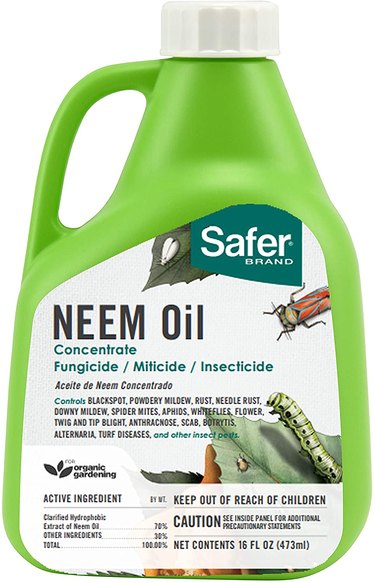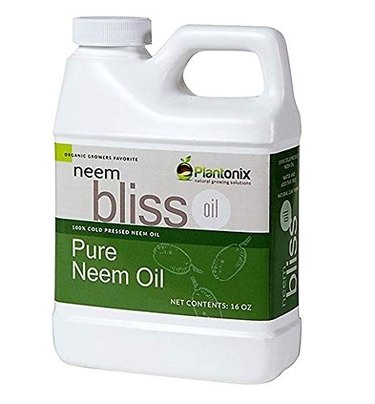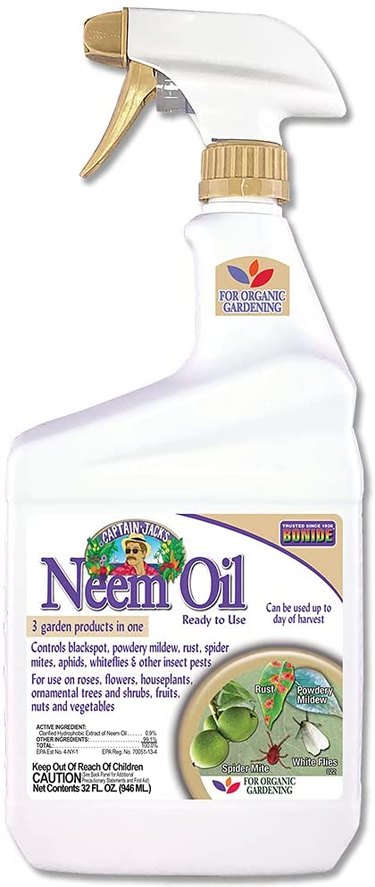Waging chemical warfare in your garden to control pest populations and disease pathogens may also compromise the health of beneficial insects, contribute to toxic stormwater runoff and even pose a hazard to people and pets. This consideration underscores the importance of choosing the right pesticide for the job – one that controls a target pest while minimally impacting the host plant and the environment.
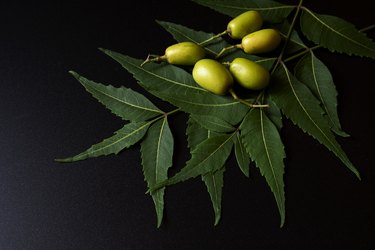
Video of the Day
Although the thought of using "chemical" pesticides carries a negative connotation for many gardeners, even products approved for organic gardening contain chemical compounds. In fact, many plants produce their own pest-fighting chemicals – which are called phytochemicals ("phyto" = plant) – as a defense mechanism.
Video of the Day
Some pest-control products, such as neem oil, are botanical pesticides that are derived from these phytochemicals. Although neem oil isn't a one-size-fits-all remedy for all plant pests, it's a less toxic option than many synthetic chemical pesticides for controlling certain insect pests and fungal diseases.
Neem Tree Pesticidal Properties
From its native habitat throughout India and its neighboring countries, the neem tree (Azadirachta indica, USDA plant hardiness zones 10 through 12) is the source for numerous consumer products. Different parts of this plant are used to make a wide variety of consumables, from furniture to cosmetics. It's this tree's pesticidal properties that make it valuable to the gardening world. Although all parts of the neem tree contain the naturally occurring phytochemicals that repel many pests, the highest concentration of these chemicals is found in the seeds.
Neem oil, which is extracted from the seeds inside drupes that resemble olives, is made of many components. Azadirachtin is the most potent of these components as an active ingredient in pesticides that's responsible for repelling or killing certain pests. Neem oil can be applied to plants through different formulations, including granules, foliar sprays, hose-end sprayer products, soil drenches, emulsifiable concentrates and wettable powders.
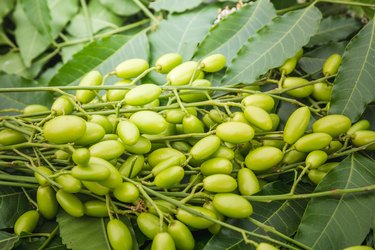
How Neem Works
Compared to some other types of pesticides, which have a single mode of action, the naturally occurring chemicals in neem oil work in different ways to control pests. Depending on the type of pest, the growth stage of the pest and the specific formulation of the product, neem can act as a suffocant, a repellant, a growth regulator or a feeding deterrent.
For example, neem suffocates some adult insects by coating their bodies with oil, which blocks the openings through which an insect breathes. When used on immature larvae, neem oil interferes with the molting process and prohibits the larvae from developing into adults. Mites, which are arachnids and not insects, can also be controlled with neem oil.
Not only does neem oil act as a control option for some fungal diseases already present on a plant but it also acts as a preventative against the development of these pathogens. It works on these diseases by preventing fungal spores from developing or by preventing the spores from penetrating plant surfaces. Powdery mildew, downy mildew, black spot, rust, leaf spot, botrytis and anthracnose are some of the fungal diseases that may be prevented or controlled by neem oil.
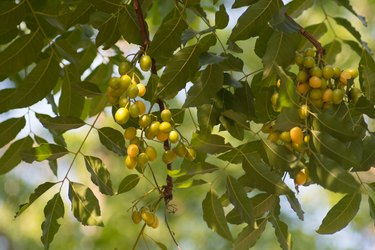
Benefits of Using Neem
Compared to many synthetic chemical pesticides, neem oil quickly degrades without persisting in the landscape, and it's also less toxic to mammals. Because of its rapid degradation, neem becomes less of a residual threat to nontarget pests, such as beneficial insects. These qualities make neem a sound choice in a responsible integrated pest management (IPM) strategy.
The properties of azadirachtin, neem's primary chemical agent, make it compatible with other less toxic pesticides (including horticultural oil, insecticidal soap and Bacillus thuringiensis [Bt]) so that gardeners can effectively use neem as one component of a multipronged IPM strategy instead of an all-or-nothing control.
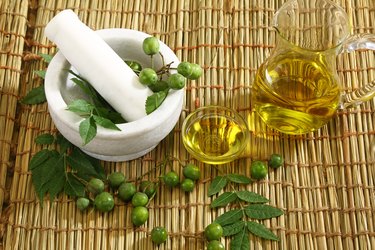
Drawbacks of Using Neem
As is often the case when using any pesticide, the benefits can also be the drawbacks. For example, because it doesn't linger in the landscape – a benefit that makes it less toxic than synthetic chemicals – neem oil isn't a one-shot application. It degrades more quickly in high temperatures, when exposed to direct sunlight and after rain events. Depending on the specific product you use, you may need to apply neem oil to your plants every seven days, particularly to control infestations.
A noteworthy drawback of neem oil is that it cannot be used on all plants. Neem-sensitive plants may be damaged or even killed by the application of this product. Even though its pesticidal components are naturally occurring phytochemicals produced by the neem tree, these compounds are still chemicals that can injure certain plants.
Plants Sensitive to Neem
Neem oil may burn the foliage of certain plants. Flowers, young plants, new transplants and stressed plants are susceptible, even on species or cultivars that are typically not susceptible to neem damage. Although not an exhaustive list of neem-sensitive plants, some common examples are fuchsia, hibiscus, impatiens, cedars, junipers and spruces. Even among plants of the same genus, such as roses, certain species and cultivars may be sensitive while others are not.
Some plants are extremely sensitive to neem oil, which makes them even more susceptible to damage. A prime example is maples, particularly Japanese maples and red maples. You wouldn't want to spray your prized Japanese maple with neem oil, or you risk damaging it. Always read the product label to make sure that your target plant isn't listed as neem-sensitive and first apply neem to a test area on your plant to determine any adverse effects before applying it to the entire plant.
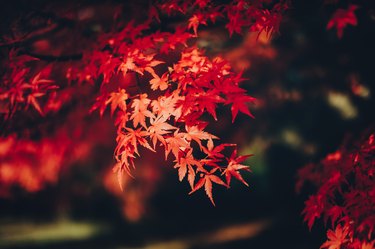
Pests Affected by Neem Oil
The list of garden pests that neem oil prevents, repels or controls is a long one. As an insecticide, neem combats pests such as:
- Aphids
- Leafhoppers
- Leafminers
- Mealybugs
- Psyllids
- Scales
- Thrips
- Whiteflies
As a miticide, neem oil affects mites such as:
- Two-spotted spider mites
- Southern red mites
- Spruce spider mites
As a fungicide, neem oil affects fungal pathogens such as:
- Alternaria
- Anthracnose
- Black spot
- Botrytis
- Downy mildew
- Powdery mildew
Neem oil may also be used as a nematicide to control nematodes that feed on plant roots, although this application is more commonly used in commercial settings, such as farming operations and golf courses, instead of in the residential landscape.
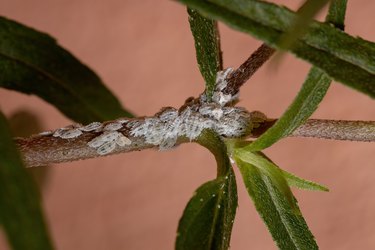
Neem Oil for Soft-Bodied Pests
In the gardening world, there's a group of pests collectively called "soft-bodied" pests. Aphids, mealybugs and whiteflies are three common soft-bodied pests that damage plants. They feed on cell sap by puncturing plant tissue and siphoning the sap. Neem suffocates these pests by covering their bodies with oil.
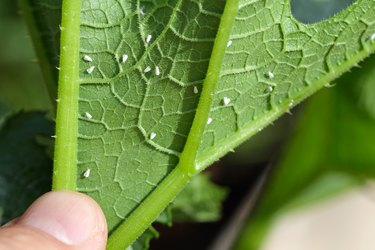
Neem Oil for Scale Insects
Many adult scale insects are covered with hard, protective armor, but they're still classified as soft-bodied insects. Although adult scale insects have this armor, immature scale insects are soft-bodied and lack this hardened covering. This is one reason it's important to observe your plants and apply neem oil as soon as you see immature pests or observe feeding damage. Another reason to use neem oil or any pesticide in the early stages of infestation is to manage the feeding damage before plants become tattered.
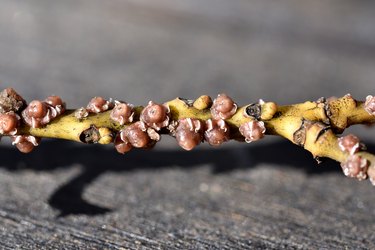
Neem Oil for Powdery Mildew
Fungal pathogens can reproduce at any time during the growing season, but cool, moist, humid conditions accelerate their reproduction and growth. Powdery mildew is a widespread fungal disease that's so-named because its primary telltale symptom manifests as a white powdery substance on the top of leaves, stem surfaces and flowers.
If you have plants that are susceptible to this disease, apply neem oil before symptoms appear to prevent the disease from taking hold. If your plants already show symptoms, apply neem oil at the onset of symptoms to have the most success in controlling the disease.
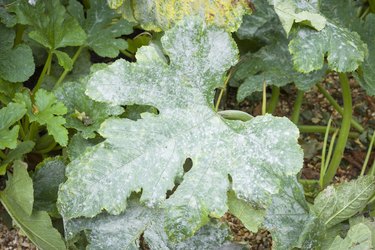
Neem Oil for Mites
Neem oil doesn't kill mites on contact. On these pests, neem acts as a growth regulator that disrupts the natural pattern of growth. Effective control may be slow and may require repeated applications. Mites are so small that they often escape detection, but their feeding damage is distinctive. Initial symptoms are silvery or dry spots on the top of leaves, and heavy feeding damage causes leaves to fall from plants after turning a bronze color.

Neem Oil Products
Neem oil products are formulated as ready-to-use sprays or as concentrates, which you mix in water before applying to plants. Always follow label directions because different brand names and different formulations vary in their recommendations for mixing and/or usage.
Safer Brand Neem Oil Concentrate
This 16-ounce product makes up to 16 gallons of neem oil spray that's effective as an insecticide, fungicide and miticide. It contains 70 percent neem oil extract, mixed at the rate of 1 ounce concentrate per 1 gallon of water.
Bliss Brand 100% Neem Oil
This is also a 16-ounce product, but it contains 100 percent cold-pressed neem seed oil. Mix it at the rate of 1 ounce concentrate per 1 gallon of water and add 1/2 teaspoon of mild liquid dish soap before applying to your plants or to target pests.
Bonide Brand Ready-to-Use Neem Oil
For gardeners who prefer the convenience of a premixed product, this ready-to-use neem oil formulation comes in a handy 1-quart plastic bottle. Simply spray it on plants or target pests according to the label recommendations.
